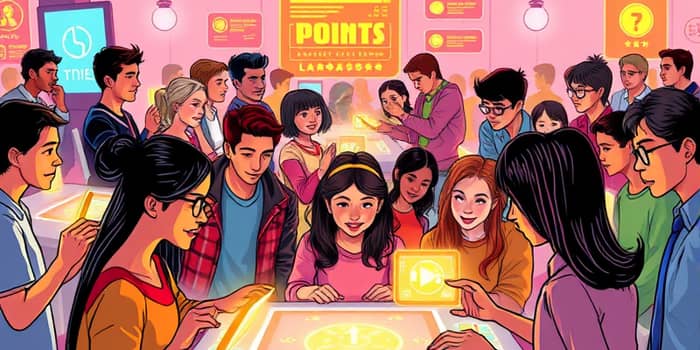
Financial literacy is a crucial life skill, yet traditional methods of teaching it often feel abstract and uninspiring. By transforming education into an interactive experience, gamification breathes new life into budgeting, saving, and investing. In this article, we explore how integrating playful elements into financial learning not only enhances engagement but also leads to lasting, real-world behavioral change.
From corporate wellness programs to classroom curricula, the marriage of game design with monetary concepts is reshaping how people of all ages manage their money. Backed by compelling statistics and case studies, gamification is proving to be a powerful catalyst for better money habits.
Gamification involves embedding game mechanics like points and badges into non-game contexts. In financial education, this might mean rewarding users for completing a budgeting module or advancing levels as they master investing basics. Rather than passive reading, learners become active participants, navigating challenges and celebrating milestones.
At its core, gamified financial literacy leverages competition, collaboration, and curiosity to motivate users. When tasks are structured like quests and progress is visible, participants are far more likely to stay committed and address intimidating topics such as debt management or tax planning.
Effective financial gamification relies on several key components, each tailored to foster sustained interest and practical skill-building.
By combining these elements, platforms transform complex topics into manageable tasks. This strategy of breaking complex concepts into tasks not only clarifies ideas but also sustains momentum as learners tick off goals one by one.
Research consistently demonstrates the power of gamification in financial education. Organizations deploying game-based modules report a significant increase in engagement — often more than 75% higher than traditional methods. Knowledge retention soars by 50–70%, while users of gamified systems achieve saving targets at nearly twice the rate of non-gamified peers.
Beyond learning outcomes, gamified financial wellness programs yield tangible organizational benefits. Companies have recorded a 28% drop in productivity loss and a 23% reduction in turnover, as employees feel more confident managing personal finances and less burdened by money worries.
Several high-profile initiatives showcase the versatility and impact of gamified financial literacy across demographics.
These examples illustrate how adaptable gamification is—from youth-focused apps to large-scale corporate initiatives—proving its potential to meet diverse learning needs.
Gamified financial education taps into fundamental behavioral drivers:
By focusing on engagement loops—where action leads to reward and new challenges—gamification sustains interest and fosters genuine skill acquisition over time.
While gamification offers powerful benefits, thoughtful design is crucial. Poorly executed systems risk trivializing essential concepts or encouraging superficial participation. To ensure lasting value, financial games should:
Addressing these considerations safeguards against short-lived engagement and ensures the focus remains on cultivating positive behavioral change and savings goals rather than simply collecting tokens.
Looking ahead, innovations are poised to deepen the effectiveness of gamification in financial literacy:
Adaptive algorithms will personalize challenge levels based on user performance, making learning more efficient. Integration with fintech tools can create seamless real-time simulations of budgeting and investment decisions. Augmented reality and immersive environments may bring financial scenarios to life, further reducing anxiety around complex topics.
Furthermore, community-driven features—peer mentoring, collaborative quests, and social learning hubs—will strengthen accountability and make financial wellness a shared, supportive journey. Such developments promise sustained, long-term learner motivation and a broader reach across global audiences.
As gamification evolves, its principles will likely extend beyond formal education into everyday finance management. Banking apps, payroll platforms, and digital wallets may embed gameful elements, guiding users through healthier money habits at every turn.
Ultimately, gamification in financial literacy is not merely a trend but a transformative approach that harnesses the joy of play to build confidence, competence, and lasting money management skills.
By embracing thoughtful, evidence-based game design, educators and organizations can unlock the potential of interactive learning, empowering individuals to navigate their financial futures with clarity and enthusiasm.
References





